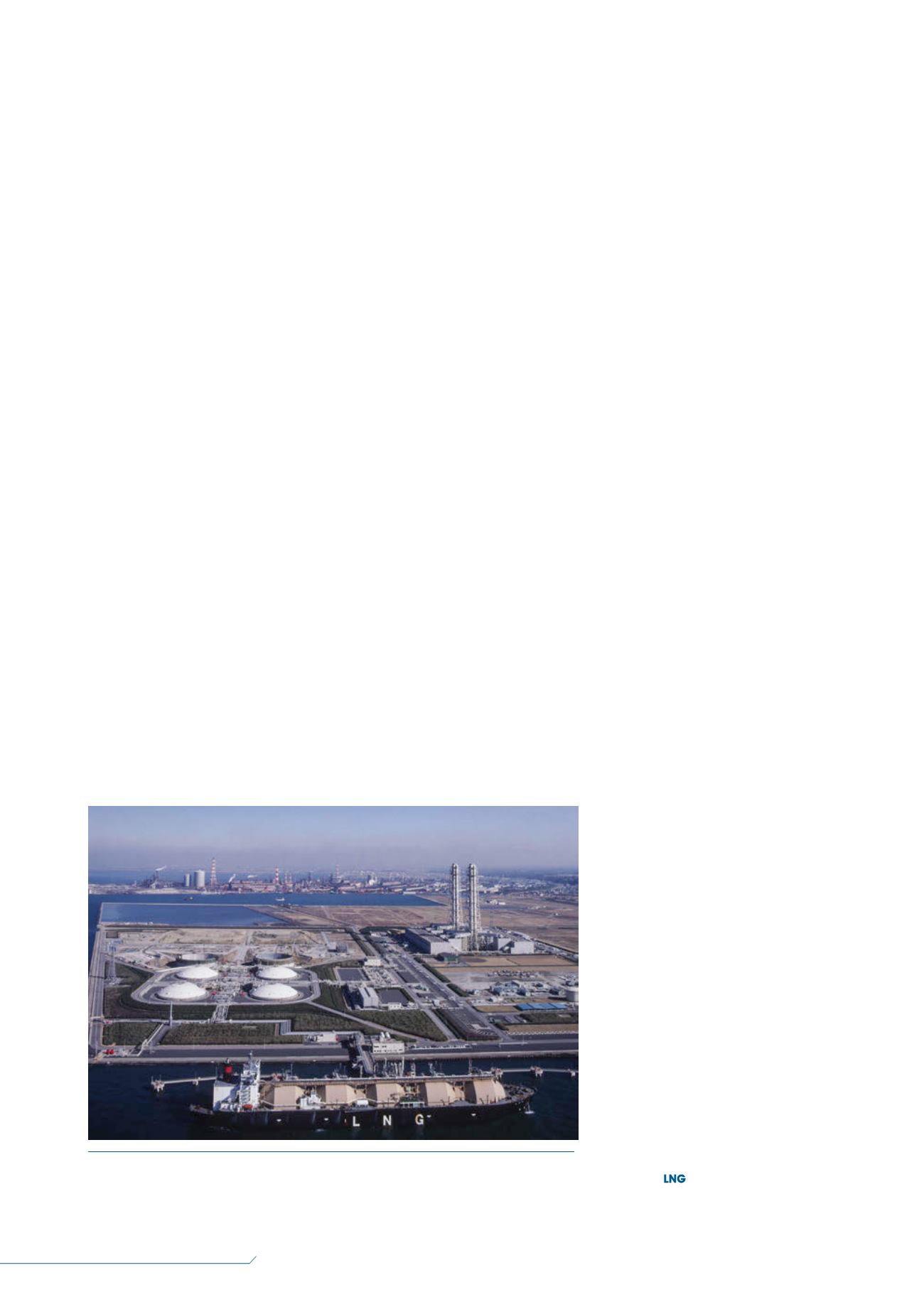
60
LNG
INDUSTRY
SEPTEMBER
2016
SIL rating. These include access to predictive maintenance
data, reduced need for valve bypasses, extension of full
stroke testing intervals, and availability of valves to
respond to process demands during test periods. The
latest developments enable PST to be carried out with
limited human intervention in a semi-automatic way
through the use of smart microprocessor-based devices.
This advanced monitoring and control technology for
ESDVs has made PST more effective and easier to
implement, helping to achieve improved integrity and
safety of processes.
When designing HIPPS and ESD systems, the complete
lifecycle should be considered from front end engineering
design (FEED) through to maintenance, commissioning and
service. Additional optimisation can be achieved through a
simplified control scheme, which reduces the need for
human dependency. It can be utilised to extend proof test
intervals and, when combined with effective diagnostics,
PST allows customers to move from reactive to predictive
maintenance. Such optimisation strategies are essential to
develop a system that not only meets the requirements of
high integrity safety systems, but which also allows for the
responsible management of CAPEX and OPEX.
Triple offset technology
Triple offset valves (TOVs) also play a key role in LNG
applications and are integral to the safe operation of critical
functions. Effective design and excellent performance
characteristics enable the valve to handle the demands
of the liquefaction process. For example, the valves’
non-rubbing metal-to-metal seating design provides zero
leakage shut-off performance and complete fire safety.
This enhances reliability and can reduce overall equipment
footprint and cost of ownership. Different types of TOVs
offer additional benefits. Top entry TOVs, for example, are
designed to allow inline maintenance, enabling users to
access individual valve parts in total safety.
Certification considerations
FLNG comprises additional risks, requiring further
consideration with regard to safety and standards.
Understanding the risks and how best to mitigate them
will help prevent the potential for disasters and provide
guidance on how to ensure optimum safety on a vessel.
Certification bodies play a key role here, validating that
critical equipment meets the required safety standards.
With a focus on technical assessment advisory and risk
management, DNV GL is an example of an international
classification and certification association that may impose
overarching requirements for certain valves in FLNG.
Manufacturers must submit their valves for a formal design
review, which comprises a design verification report, survey
during manufacture, and a data book review. Following this,
they have two options: type approval or a product
certification, the latter of which is hull, project or application
specific. Valve types covered can include PRVs and ESDVs,
as well as cryogenic, hull and boiler-related valves. This
rigorous process is performed to ensure that the
components fulfil their specific requirements, helping to
guide the development of the design phase and ensure
maximum safety.
Partnership
Ensuring that plants are safe and equipment complies
with SIL requirements and other standards is imperative.
Specification and installation of valves, actuators and
controls can be made more efficient by working with
one manufacturer, which provides safety elements
and solutions designed to withstand the demanding
conditions of the liquefaction process. A company acting
as one single point of contact from assembly through to
aftermarket support helps operators mitigate risk and
optimise their value chain. In addition to robust, high quality
products with proven performance in LNG applications,
operators seek a complete package warranty and sole
source accountability, which original
equipment manufacturers (OEMs) are
able to provide.
Summary
An industry where safety is a must,
LNG operations – whether land-based
or offshore – cannot be considered
lightly. While plant operators demand
efficiency, durability and minimised cost
and maintenance from their process
equipment, a key focus is placed on
protecting people and assets, and the
avoidance of operational downtime.
Manufacturers of critical components
must, therefore, keep safety in mind as
they craft solutions for this challenging
environment. Optimised valve
technology created in line with industry
evolution and tailored to specific
applications of the LNG process can
meet the needs of plant designers and
operators.
Figure 2.
Effective valve design and application is critical for safe and reliable
operations.


